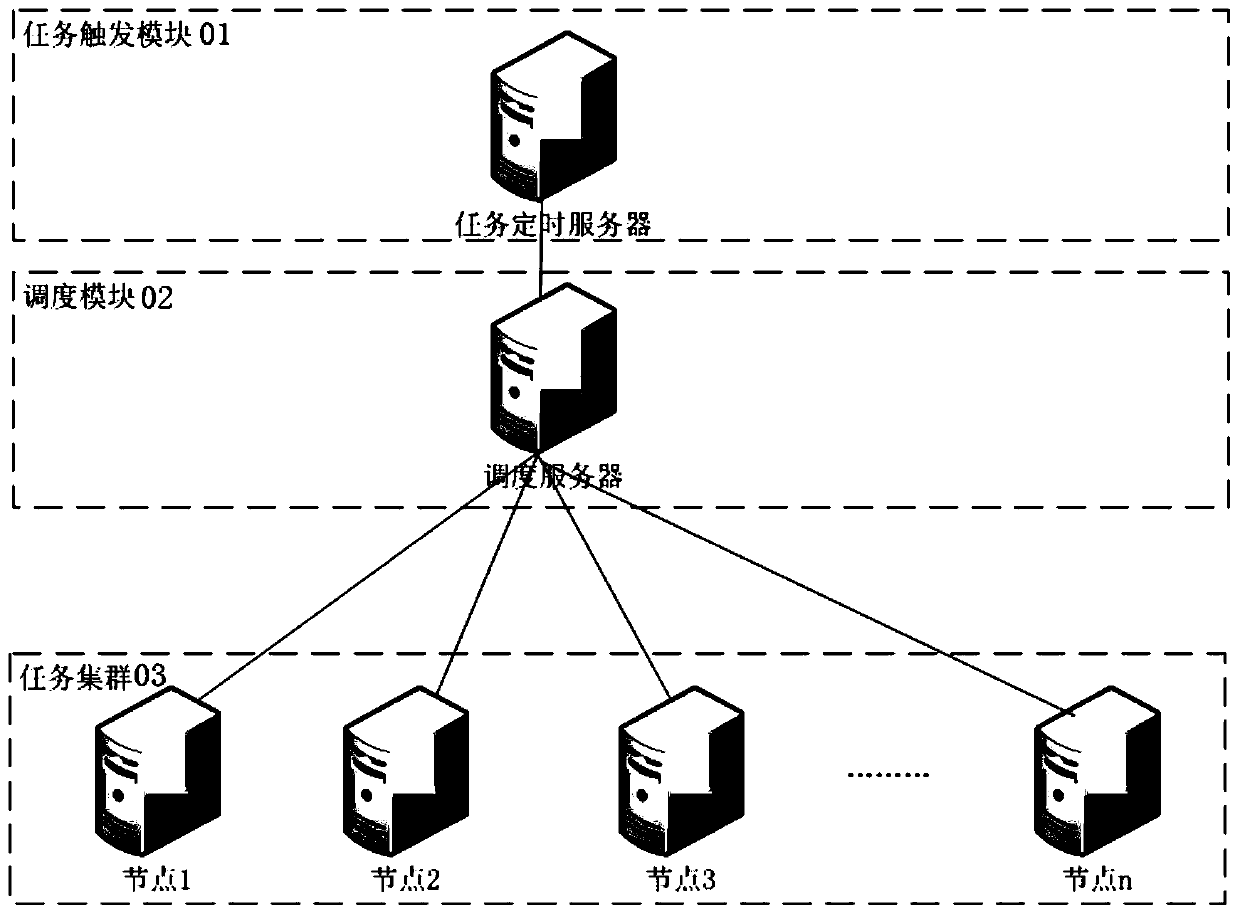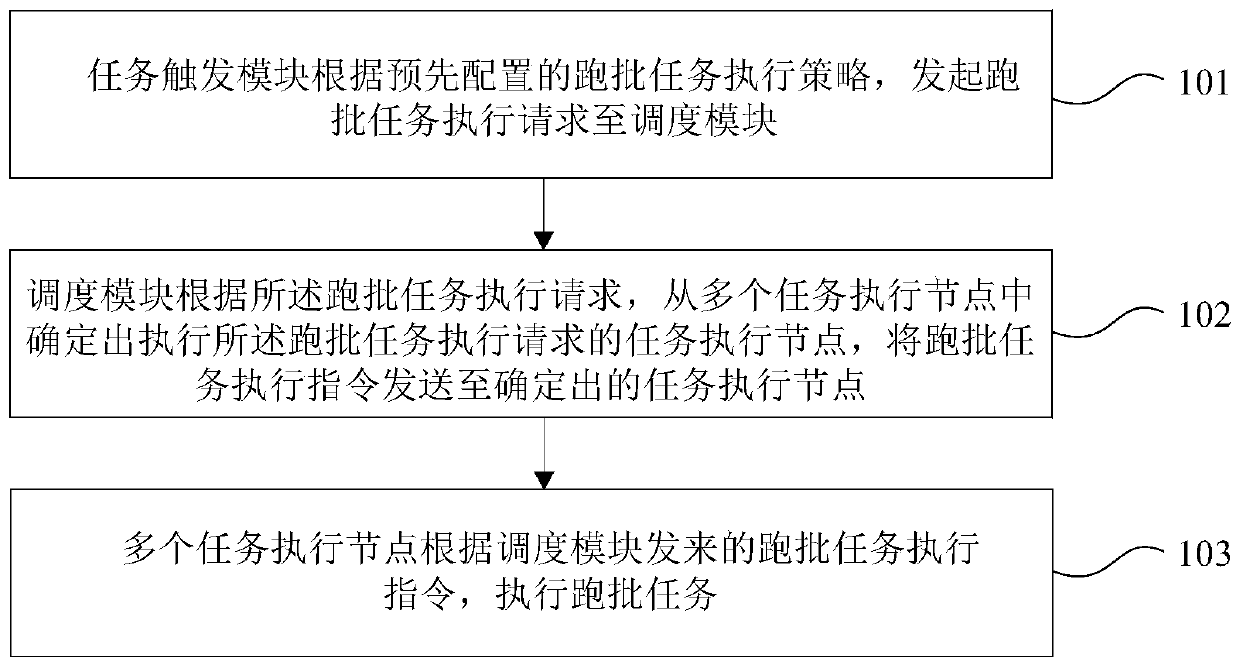Batch processing device and method based on distributed architecture
A distributed architecture and processing device technology, applied in the field of data processing, can solve problems that affect task execution efficiency, high computer performance consumption, and no solution has been proposed, so as to achieve simple maintenance, improve reliability, system performance and ease of maintenance , Enhance the effect of system reliability
- Summary
- Abstract
- Description
- Claims
- Application Information
AI Technical Summary
Problems solved by technology
Method used
Image
Examples
Embodiment Construction
[0027] The following will clearly and completely describe the technical solutions in the embodiments of the present invention with reference to the accompanying drawings in the embodiments of the present invention. Obviously, the described embodiments are only some of the embodiments of the present invention, not all of them. Based on the embodiments of the present invention, all other embodiments obtained by persons of ordinary skill in the art without making creative efforts belong to the protection scope of the present invention.
[0028] The inventor found a technical problem: the existing stand-alone deployment, that is, the business system is deployed on one or several fixed machines. Disadvantages include: low reliability. Tasks are fixedly deployed on one server. If an abnormality occurs on the server, it will affect the operation of tasks deployed on it. At the same time, the stand-alone performance is limited. As the business grows and the amount of data increases, t...
PUM
 Login to View More
Login to View More Abstract
Description
Claims
Application Information
 Login to View More
Login to View More - R&D
- Intellectual Property
- Life Sciences
- Materials
- Tech Scout
- Unparalleled Data Quality
- Higher Quality Content
- 60% Fewer Hallucinations
Browse by: Latest US Patents, China's latest patents, Technical Efficacy Thesaurus, Application Domain, Technology Topic, Popular Technical Reports.
© 2025 PatSnap. All rights reserved.Legal|Privacy policy|Modern Slavery Act Transparency Statement|Sitemap|About US| Contact US: help@patsnap.com



